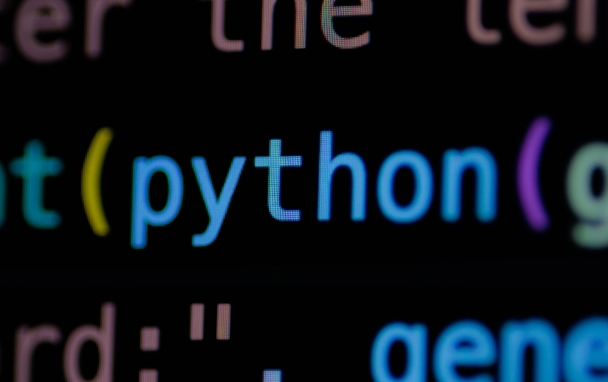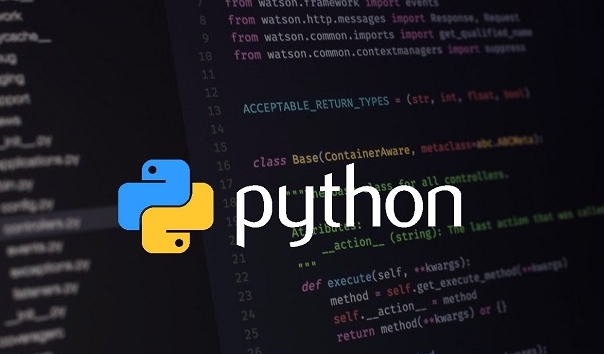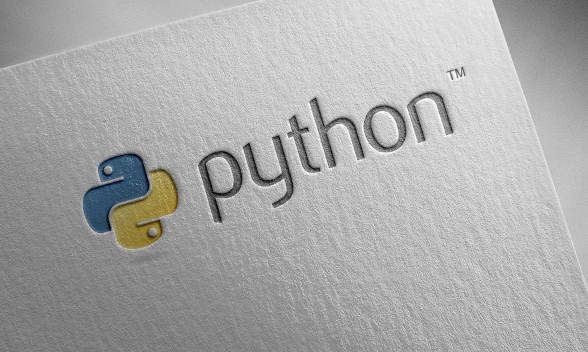 Backend Development
Backend Development
 Python Tutorial
Python Tutorial
 Working with File Paths and Directories Using Python's os Module
Working with File Paths and Directories Using Python's os Module
Working with File Paths and Directories Using Python's os Module
Jul 07, 2025 am 02:40 AMThis article introduces common methods in Python to use the os module to process file paths and directories. 1. Use os.getcwd() to get the current working directory, and use os.path.dirname(os.path.abspath(__file__)); 2. It is recommended to use os.path.join() to ensure cross-platform compatibility. The parsing path can be os.path.basename, os.path.dirname, os.path.split and os.path.splitext; 3. Use os.makedirs() to create a directory and it is recommended to set exist_ok=True, use os.rmdir() to delete an empty directory, and use shutil.rmtree() to delete a non-empty directory; 4. Use os.listdir() to list the contents of the directory, or os.walk() to recursively traverse the entire directory tree, suitable for batch processing and searching files. Mastering these techniques can help to efficiently handle file system-related tasks.

Handling file paths and directories is a very common task in programming, especially when interacting with the operating system. Python's os module provides a variety of ways to manipulate paths, create/delete directories, and traverse file structures. This article will introduce several key usage tips and precautions.

Get the current working directory
Sometimes you need to know the directory where the program is running. You can use os.getcwd() to get the current working directory:

import os print(os.getcwd())
This function returns the location where you were when you executed the script, not the location of the script file itself. If you want to get the directory where the script file is located, you can use the following method:
script_dir = os.path.dirname(os.path.abspath(__file__))
This is useful when organizing project structures or reading relative path resources.

Splicing and parsing paths
Manual stitching paths are prone to errors, especially when cross-platform development (such as Windows and Linux use different separators). It is recommended to use the os.path.join() function to safely splice paths:
path = os.path.join('folder', 'subfolder', 'file.txt')
It will automatically select the appropriate path separator according to the operating system. If you want to parse an existing path string, you can use:
-
os.path.basename(path): Get the file name part -
os.path.dirname(path): Get the directory part -
os.path.split(path): Get the directory and file name at the same time -
os.path.splitext(filename): Separate filename and extension
These functions can help you process path information more flexibly in different scenarios.
Create and delete directories
Sometimes we need to make sure that a directory exists before we can continue to perform subsequent operations. You can use os.makedirs() to create multi-layer directories:
os.makedirs('a/b/c', exist_ok=True)
exist_ok=True parameter means that if the directory already exists, there will be no error. When deleting a directory, if it is an empty directory, you can use os.rmdir() ; if the directory is not empty, you may need to use shutil.rmtree() (although it does not belong to the os module, it is very practical in this case).
Commonly used operations include:
- Make sure the directory exists before writing to the file
- Clear content before deleting temporary directories
- Bulk creation of test directory structures
Iterate over files in the directory
To find all files or subdirectories in a directory, you can usually use os.listdir() or os.walk() .
-
os.listdir('mydir')will list all files and subdirectories in this directory. - If you want to recursively access the entire directory tree,
os.walk()is more suitable:
for root, dirs, files in os.walk('start_dir'):
print(f"Current directory: {root}")
print("Contained subdirectories:", dirs)
print("Included files:", files)This function is often used to batch process files, search for specific types of files, etc.
Basically that's it. With these basic operations mastered, you can more easily handle various file system-related tasks. What is not complicated but is easy to ignore is the path stitching and the understanding of the current directory. If you are not careful, the file will not be found.
The above is the detailed content of Working with File Paths and Directories Using Python's os Module. For more information, please follow other related articles on the PHP Chinese website!

Hot AI Tools

Undress AI Tool
Undress images for free

Undresser.AI Undress
AI-powered app for creating realistic nude photos

AI Clothes Remover
Online AI tool for removing clothes from photos.

Clothoff.io
AI clothes remover

Video Face Swap
Swap faces in any video effortlessly with our completely free AI face swap tool!

Hot Article

Hot Tools

Notepad++7.3.1
Easy-to-use and free code editor

SublimeText3 Chinese version
Chinese version, very easy to use

Zend Studio 13.0.1
Powerful PHP integrated development environment

Dreamweaver CS6
Visual web development tools

SublimeText3 Mac version
God-level code editing software (SublimeText3)
 How to handle API authentication in Python
Jul 13, 2025 am 02:22 AM
How to handle API authentication in Python
Jul 13, 2025 am 02:22 AM
The key to dealing with API authentication is to understand and use the authentication method correctly. 1. APIKey is the simplest authentication method, usually placed in the request header or URL parameters; 2. BasicAuth uses username and password for Base64 encoding transmission, which is suitable for internal systems; 3. OAuth2 needs to obtain the token first through client_id and client_secret, and then bring the BearerToken in the request header; 4. In order to deal with the token expiration, the token management class can be encapsulated and automatically refreshed the token; in short, selecting the appropriate method according to the document and safely storing the key information is the key.
 Explain Python assertions.
Jul 07, 2025 am 12:14 AM
Explain Python assertions.
Jul 07, 2025 am 12:14 AM
Assert is an assertion tool used in Python for debugging, and throws an AssertionError when the condition is not met. Its syntax is assert condition plus optional error information, which is suitable for internal logic verification such as parameter checking, status confirmation, etc., but cannot be used for security or user input checking, and should be used in conjunction with clear prompt information. It is only available for auxiliary debugging in the development stage rather than substituting exception handling.
 What are python iterators?
Jul 08, 2025 am 02:56 AM
What are python iterators?
Jul 08, 2025 am 02:56 AM
InPython,iteratorsareobjectsthatallowloopingthroughcollectionsbyimplementing__iter__()and__next__().1)Iteratorsworkviatheiteratorprotocol,using__iter__()toreturntheiteratorand__next__()toretrievethenextitemuntilStopIterationisraised.2)Aniterable(like
 What are Python type hints?
Jul 07, 2025 am 02:55 AM
What are Python type hints?
Jul 07, 2025 am 02:55 AM
TypehintsinPythonsolvetheproblemofambiguityandpotentialbugsindynamicallytypedcodebyallowingdeveloperstospecifyexpectedtypes.Theyenhancereadability,enableearlybugdetection,andimprovetoolingsupport.Typehintsareaddedusingacolon(:)forvariablesandparamete
 How to iterate over two lists at once Python
Jul 09, 2025 am 01:13 AM
How to iterate over two lists at once Python
Jul 09, 2025 am 01:13 AM
A common method to traverse two lists simultaneously in Python is to use the zip() function, which will pair multiple lists in order and be the shortest; if the list length is inconsistent, you can use itertools.zip_longest() to be the longest and fill in the missing values; combined with enumerate(), you can get the index at the same time. 1.zip() is concise and practical, suitable for paired data iteration; 2.zip_longest() can fill in the default value when dealing with inconsistent lengths; 3.enumerate(zip()) can obtain indexes during traversal, meeting the needs of a variety of complex scenarios.
 Python FastAPI tutorial
Jul 12, 2025 am 02:42 AM
Python FastAPI tutorial
Jul 12, 2025 am 02:42 AM
To create modern and efficient APIs using Python, FastAPI is recommended; it is based on standard Python type prompts and can automatically generate documents, with excellent performance. After installing FastAPI and ASGI server uvicorn, you can write interface code. By defining routes, writing processing functions, and returning data, APIs can be quickly built. FastAPI supports a variety of HTTP methods and provides automatically generated SwaggerUI and ReDoc documentation systems. URL parameters can be captured through path definition, while query parameters can be implemented by setting default values ??for function parameters. The rational use of Pydantic models can help improve development efficiency and accuracy.
 How to test an API with Python
Jul 12, 2025 am 02:47 AM
How to test an API with Python
Jul 12, 2025 am 02:47 AM
To test the API, you need to use Python's Requests library. The steps are to install the library, send requests, verify responses, set timeouts and retry. First, install the library through pipinstallrequests; then use requests.get() or requests.post() and other methods to send GET or POST requests; then check response.status_code and response.json() to ensure that the return result is in compliance with expectations; finally, add timeout parameters to set the timeout time, and combine the retrying library to achieve automatic retry to enhance stability.
 Setting Up and Using Python Virtual Environments
Jul 06, 2025 am 02:56 AM
Setting Up and Using Python Virtual Environments
Jul 06, 2025 am 02:56 AM
A virtual environment can isolate the dependencies of different projects. Created using Python's own venv module, the command is python-mvenvenv; activation method: Windows uses env\Scripts\activate, macOS/Linux uses sourceenv/bin/activate; installation package uses pipinstall, use pipfreeze>requirements.txt to generate requirements files, and use pipinstall-rrequirements.txt to restore the environment; precautions include not submitting to Git, reactivate each time the new terminal is opened, and automatic identification and switching can be used by IDE.





